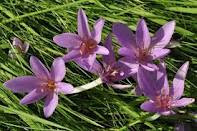Longjack is an accepted name for this evergreen tree which is native to Southeast Asia and which is known by a number of names throughout the region. The ones above are the most common. It is a member of the Simaroubaceae family. It gets the “jack” part of its name as William Jack (1795-1872), a surgeon with the British East India Company, was one of the first westerners to try to catalogue the plants of the Malaysian peninsular. The “long” part of the name presumably refers to the plants aphrodisiac properties. Tongkat Ali means “Ali’s staff ” and is a phallic reference worthy of D.H. Lawrence, who wrote “Aaron’s Rod” among other works of fiction and poetry.
 A lot of research has been done on this plant focusing on the enhancing of the libido and semen volume in male rats and their testosterone levels. It seems that the quassinoids found in the plant may be responsible for their effects on men who have a reduced testosterone level, although it doesn’t seem to increase testosterone levels in men who have normal levels. Researchers at the Massachusetts institute of Technology (M.I.T) and the Malaysian research institutes have taken out a patent on one of the peptides isolated from this plant, 4.3kDa which is a potent phytoandrogen capable of boosting male testosterone levels, although this has caused some controversy in the scientific world as the peptide is a naturally occurring one.
A lot of research has been done on this plant focusing on the enhancing of the libido and semen volume in male rats and their testosterone levels. It seems that the quassinoids found in the plant may be responsible for their effects on men who have a reduced testosterone level, although it doesn’t seem to increase testosterone levels in men who have normal levels. Researchers at the Massachusetts institute of Technology (M.I.T) and the Malaysian research institutes have taken out a patent on one of the peptides isolated from this plant, 4.3kDa which is a potent phytoandrogen capable of boosting male testosterone levels, although this has caused some controversy in the scientific world as the peptide is a naturally occurring one. The root, bark, leaves and fruits of this tree are all used in traditional medicine systems, with the fruit of the tree ripening to a dark red, resembling a jujube or ber fruit. The different parts of the tree have been used for malaria, urinary tract infections, cancer, indigestion, itching and high blood pressure among other ailments.
The root, bark, leaves and fruits of this tree are all used in traditional medicine systems, with the fruit of the tree ripening to a dark red, resembling a jujube or ber fruit. The different parts of the tree have been used for malaria, urinary tract infections, cancer, indigestion, itching and high blood pressure among other ailments. The aphrodisiac is made by boiling a few pieces of root bark in water and then drinking it. This decoction is also used as a general invigorating tonic, to relieve pains in the joints, and reduce fever. A decoction of the levels is applied externally to stop itching, for example during prickly heat attacks. The bark is applied externally to heal wounds and sores and to relieve headaches. In Indonesia a decoction of the roots is drunk to reduce fever, diarrhoea and swellings caused by a knock or fall. An infusion of the roots is given in coughs as an expectorant and is used for chronic bronchitis.
The aphrodisiac is made by boiling a few pieces of root bark in water and then drinking it. This decoction is also used as a general invigorating tonic, to relieve pains in the joints, and reduce fever. A decoction of the levels is applied externally to stop itching, for example during prickly heat attacks. The bark is applied externally to heal wounds and sores and to relieve headaches. In Indonesia a decoction of the roots is drunk to reduce fever, diarrhoea and swellings caused by a knock or fall. An infusion of the roots is given in coughs as an expectorant and is used for chronic bronchitis. The infusion of the roots is used as a gargle and a diuretic as well as an antidote to poison. It is called the “bitter antidote” referring to its taste.
The infusion of the roots is used as a gargle and a diuretic as well as an antidote to poison. It is called the “bitter antidote” referring to its taste. In some studies such as “Antimalarial activity of selected Malaysian medicinal plants” Rusliza Basir et al. (2012) Vol.1 (1) pp.82-92, the use of the plant to treat malaria has been substantiated. However, other traditional uses (apart from its effects on male erectile dysfunctions) have not been conclusively substantiated.
In one study it was found to have antimicrobial and antifungal effects while another negated the findings, although it seems that it may have some effect on cancerous cell lines, more research is needed.
















